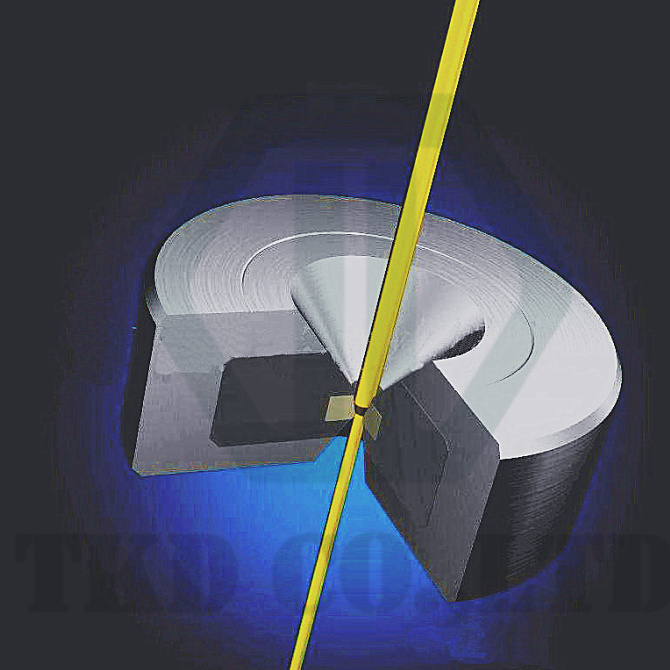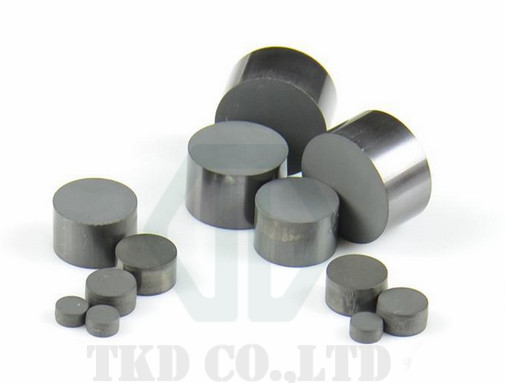Comparison of advantages and disadvantages of various wire drawing die materials

Main comparison-advantages-disadvantages-scope of application
1. Alloy steel mold-easy to make-poor wear resistance, short life-basically eliminated
2. Natural diamond-high hardness, good abrasion resistance-large brittleness, difficult to process-wire die below 1.2mm in diameter
3. Cemented Carbide-Good polishing, low energy consumption-Poor abrasion resistance, difficult processing-Various diameter wires
4. Polycrystalline diamond-high hardness, good wear resistance-difficult to process, high cost-small wire, wire
5.CVD coating material-high finish, good temperature resistance-complex process, difficult to process-small wire, wire
6. Ceramic materials-wear-resistant, high temperature resistance, good corrosion resistance-thermal shock, poor toughness, difficult to process-no large-scale application
In the drawing process of small wire and wire, natural diamond, polycrystalline diamond and CVD coating die are common drawing die materials. When drawing small diameter wires, CVD-coated diamond molds overcome the anisotropy of natural diamond molds, and at the same time have excellent strength and hardness, with the highest drawing yield and surface quality. The test proves that the life of the CVD-coated diamond wire drawing die is equivalent to that of a natural diamond die, the product has a high qualification rate, and the surface quality is better than domestic polycrystalline diamond. Therefore, for small diameter wire drawing, CVD coated diamond wire drawing die is an ideal choice. Although the wire drawing die can be used to process various steels, copper, tungsten, molybdenum and other metal and alloy materials, the wire drawing dies of different materials have their applicable processing scopes. The drawing patterns and use of the wire drawing dies of different materials when processing the same wire There is a large difference in life, so the reasonable choice of wire drawing die material is the key to successful application.
The drawing dies of different materials have their relative reasonable processing objects. The rationality of the drawing process mainly refers to the matching of the mechanical, physical and chemical properties of both the drawing die and the wire to obtain the longest mold life. For example, when drawing copper wires of the same diameter, the service life of polycrystalline diamond dies is 300 to 500 times that of hard alloy dies, and only 80 to 100 times when drawing nickel wires. The service life is only 50 to 80 times that of the carbide mold, and the life of the polycrystalline diamond mold is only 20 to 60 times that of the carbide mold when carbon steel is drawn. Due to the lack of systematic research on the matching theory of drawing die and wire in China, blind selection has been caused and resource waste has been caused. The friction and wear of wire drawing dies is very complicated, and they are generally divided into two categories: failure and friction and wear. The damage of the wire drawing die can be divided into ring failure, tensile failure, shear failure and support surface failure, etc. Friction and wear can be divided into abrasion wear, friction wear, corrosion wear, abrasion and wear caused by fine particles. The different working conditions (wire material, drawing die material, lubricant, etc.) make the drawing die wear and damage have their own unique processes.
The interrelationship between the wear and tear of the drawing die is essentially interrelated. The situation inside the drawing die may be very subtle, some factors may play a role at the same time, and their superimposed effect is very complicated and difficult to understand. It is possible that the effect of one factor will conceal the effect of other factors. The above-mentioned several forms of failure and friction and wear may often be intertwined, which makes it more difficult to analyze the damage and wear mechanism of the drawing die. But in general, the order of the wear resistance of wire drawing dies of various materials from high to low is: diamond wire drawing dies (without considering the anisotropy of natural diamond)-ceramic wire drawing dies-hard alloy dies- Obsolete alloy steel mold.

The materials of various drawing dies have their own characteristics. Among them, the natural diamond wire drawing die is the most expensive and the processing is extremely difficult. At the same time, because of the anisotropy of natural diamond, the hardness varies greatly in the radial range, and it is easy to cause severe wear in a certain direction. Therefore, the natural diamond die is only suitable for For processing small diameter wires. Carbide molds have lower hardness, the quality of the wire drawn with the carbide mold is higher, and the surface roughness is low, but the wear resistance of the carbide mold is poor, and the service life of the mold is short. The hardness of polycrystalline diamond molds is second only to that of natural diamonds. Because of its isotropic characteristics, it does not produce a single phenomenon of increased radial wear, but it is very expensive, difficult to process, and expensive to manufacture. The CVD coating wire drawing die has good abrasion resistance due to its diamond properties. The surface roughness of the drawn wire is low, but the manufacturing process of the CVD coating wire drawing die is complicated, the processing is difficult, and the cost is high; when the coating wears The rear mold will wear quickly, which not only makes it difficult to guarantee the processing quality, but also cannot be reused and can only be scrapped. Ceramic material has higher hardness and abrasion resistance than cemented carbide, and has low production cost. It is an excellent material for making wire drawing molds between diamond and cemented carbide. However, due to the poor toughness, poor thermal shock and difficult processing of ceramic materials, it has not been widely used so far.
Through the study of the material of the wire drawing die, the wire drawing die is developing towards high strength, high hardness and high wear resistance. A variety of new materials meet the requirements, the wear resistance of the wire drawing die is greatly improved, and the time of wear and damage is obvious. Delay, the life of the drawing die is continuously increasing, and the machining accuracy has also been improved to a certain extent. The applicable scope of drawing processing is gradually expanding. Wires of various specifications from thick to fine can be processed, and special-shaped dies for processing irregular wires have appeared.
TKD CO., Ltd's diamond polycrystalline wire drawing die core is widely used in China's domestic wire drawing die market and exported to Italy, France, Germany, the United States, India and other markets, and has been widely used.





 Whatsapp/wechat
Whatsapp/wechat